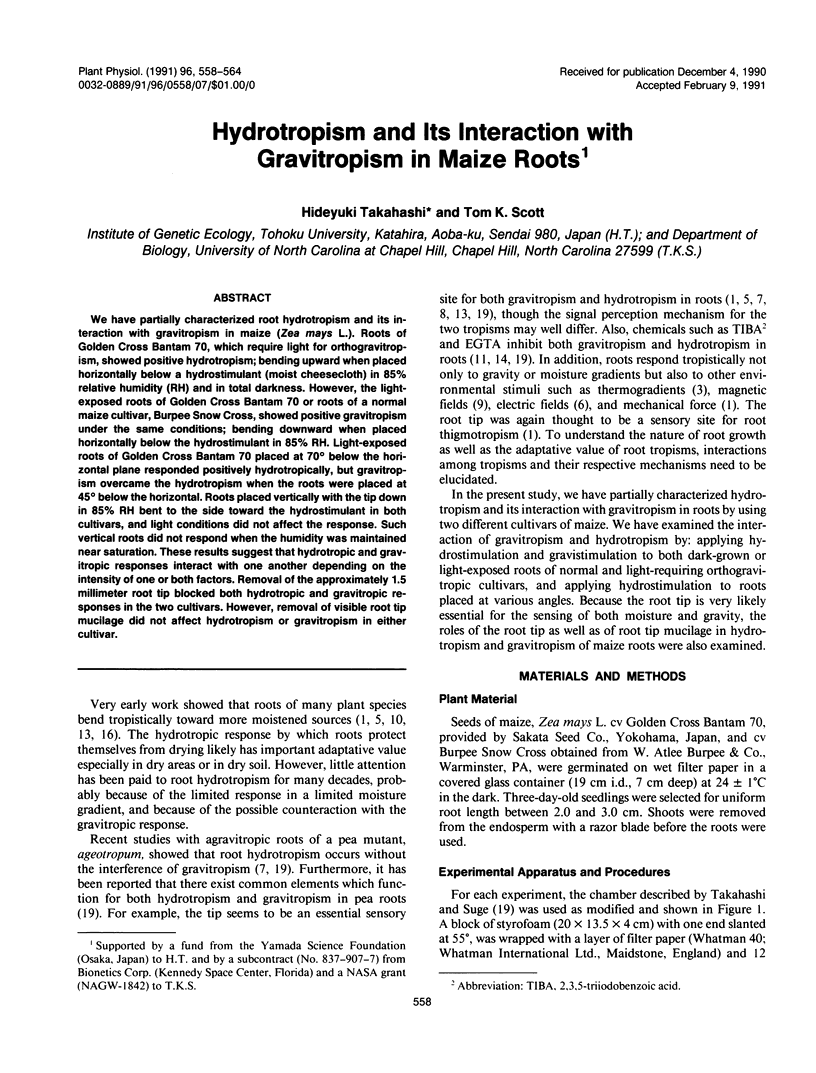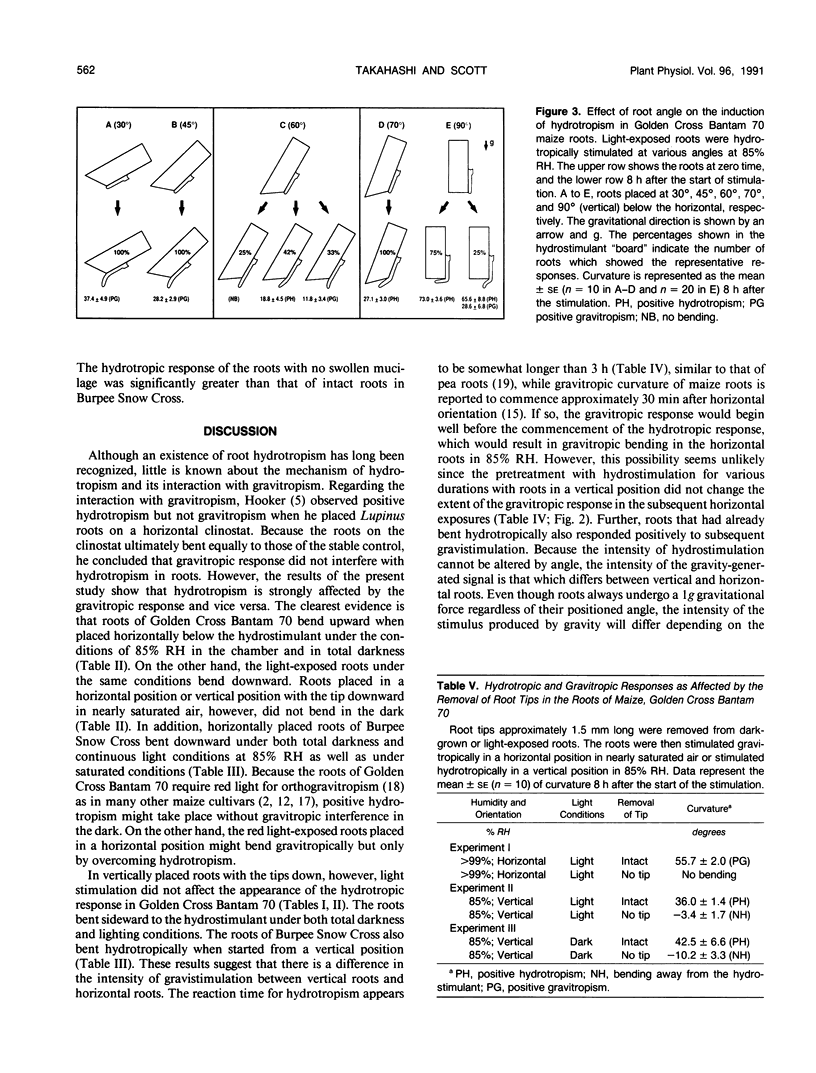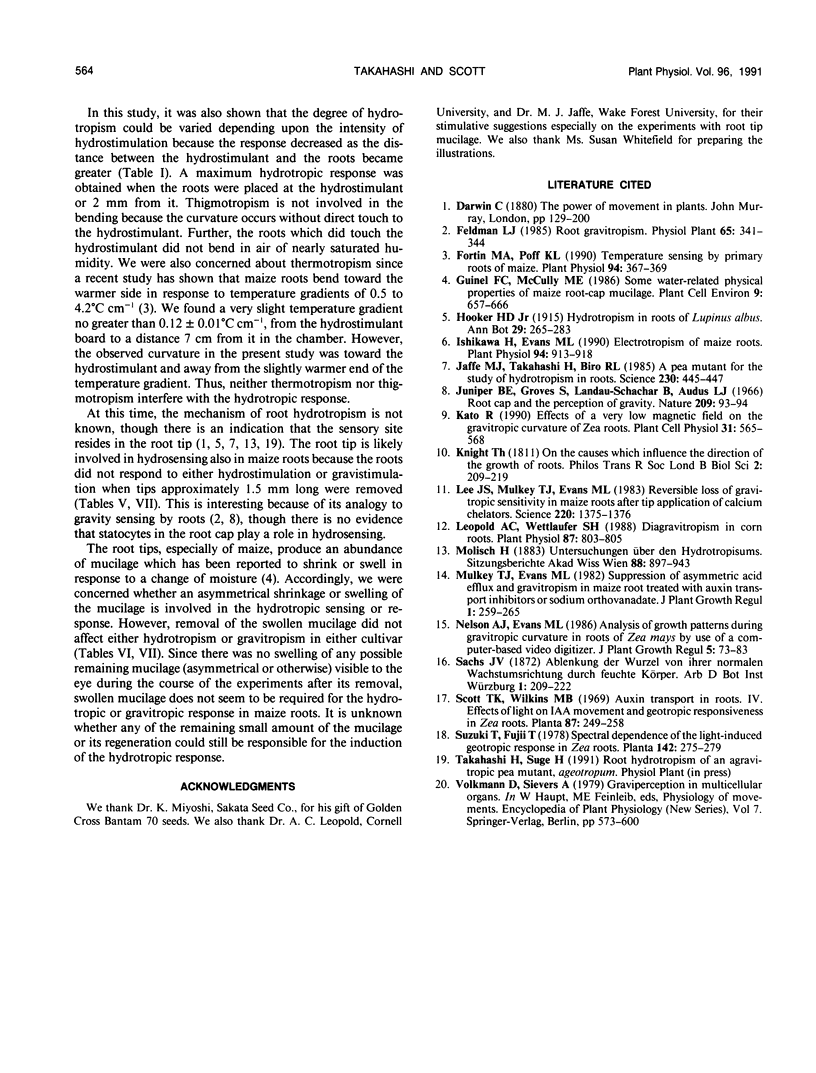Abstract
We have partially characterized root hydrotropism and its interaction with gravitropism in maize (Zea mays L.). Roots of Golden Cross Bantam 70, which require light for orthogravitropism, showed positive hydrotropism; bending upward when placed horizontally below a hydrostimulant (moist cheesecloth) in 85% relative humidity (RH) and in total darkness. However, the light-exposed roots of Golden Cross Bantam 70 or roots of a normal maize cultivar, Burpee Snow Cross, showed positive gravitropism under the same conditions; bending downward when placed horizontally below the hydrostimulant in 85% RH. Light-exposed roots of Golden Cross Bantam 70 placed at 70° below the horizontal plane responded positively hydrotropically, but gravitropism overcame the hydrotropism when the roots were placed at 45° below the horizontal. Roots placed vertically with the tip down in 85% RH bent to the side toward the hydrostimulant in both cultivars, and light conditions did not affect the response. Such vertical roots did not respond when the humidity was maintained near saturation. These results suggest that hydrotropic and gravitropic responses interact with one another depending on the intensity of one or both factors. Removal of the approximately 1.5 millimeter root tip blocked both hydrotropic and gravitropic responses in the two cultivars. However, removal of visible root tip mucilage did not affect hydrotropism or gravitropism in either cultivar.
Full text
PDF






Selected References
These references are in PubMed. This may not be the complete list of references from this article.
- Feldman L. J. Root gravitropism. Physiol Plant. 1985;65:341–344. doi: 10.1111/j.1399-3054.1985.tb02405.x. [DOI] [PubMed] [Google Scholar]
- Fortin M-CA, Poff K. L. Temperature sensing by primary roots of maize. Plant Physiol. 1990;94:367–369. doi: 10.1104/pp.94.1.367. [DOI] [PMC free article] [PubMed] [Google Scholar]
- Ishikawa H., Evans M. L. Electrotropism of maize roots. Role of the root cap and relationship to gravitropism. Plant Physiol. 1990;94:913–918. doi: 10.1104/pp.94.3.913. [DOI] [PMC free article] [PubMed] [Google Scholar]
- Jaffe M. J., Takahashi H., Biro R. L. A pea mutant for the study of hydrotropism in roots. Science. 1985 Oct 25;230(4724):445–447. doi: 10.1126/science.230.4724.445. [DOI] [PubMed] [Google Scholar]
- Lee J. S., Mulkey T. J., Evans M. L. Reversible loss of gravitropic sensitivity in maize roots after tip application of calcium chelators. Science. 1983 Jun 24;220(4604):1375–1376. doi: 10.1126/science.220.4604.1375. [DOI] [PubMed] [Google Scholar]
- Leopold A. C., Wettlaufer S. H. Diagravitropism in corn roots. Plant Physiol. 1988;87:803–805. doi: 10.1104/pp.87.4.803. [DOI] [PMC free article] [PubMed] [Google Scholar]
- Nelson A. J., Evans M. L. Analysis of growth patterns during gravitropic curvature in roots of Zea mays by use of a computer-based video digitizer. J Plant Growth Regul. 1986;5:73–83. doi: 10.1007/BF02025958. [DOI] [PubMed] [Google Scholar]


